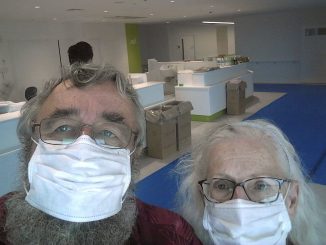RALEIGH — In a press release today, the North Carolina Department of Health and Human Services (NCDHHS) announced the state’s first case of Multisystem Inflammatory Syndrome in Children (MIS-C) associated with COVID-19.
MIS-C is a very rare condition that is not contagious. Most children with MIS-C have a fever (temperature of 100.4 degrees F or 38.0 degrees C or greater) lasting several days, along with other symptoms. Other common symptoms, can include:
- Irritability or decreased activity
- Abdominal pain without another explanation
- Diarrhea
- Vomiting
- Rash
- Conjunctivitis (red or pink eyes)
- Poor feeding
- Red, cracked lips or red, bumpy tongue that looks like a strawberry
Swollen hands and feet, which might also be red
NCDHHS advises calling your child’s doctor immediately if your child has a persistent fever plus any of the above symptoms. Your doctor will ask about your child’s symptoms in order to recommend the next steps. If your child is severely ill, DHHS says to go to the nearest emergency room or call 911 immediately.
In neighboring Virginia, the first case of Multisystem Inflammatory Syndrome in Children (MIS-C) associated with COVID-19 was recently reported. According to health officials in the state, the child was initially hospitalized on May 5 but has been discharged and is now at home recovering.
In some media reports, MIS-C may seem similar to what is called Kawasaki disease (KD) or Kawasaki syndrome. A second type of affliction has also been seen, known as PIMS, which stands for Pediatric Inflammatory Multiorgan Syndrome. PIMS is also rare, presenting in a very small number of children as shock when they report to local hospitals.
KD was first described in 1967 in Japan by Tomisaku Kawasaki. The first known cases occurring outside of Japan were in Hawaii in 1976.
The disease usually appears in three phases with a rapid onset of fever that may go from moderate (101° to 102° F) to high (above 103°). A bright red rash usually appears which may concentrate in the groin area and consists of spots of various sizes. Bloodshot eyes will follow usually without any kind of puss or discharge. The patient’s tongue may seem enlarged can resemble the seeds of a strawberry and the lips can become dry, cracked and bright red.
Swollen lymph nodes in the neck may occur and there may be swelling in the hands and feet, which also may turn reddish.
According to the Kawasaki Disease Foundation, “Kawasaki disease affects children almost exclusively; most patients are under 5 years of age. For reasons still unknown, males acquire the illness almost twice as often as females.”
“The most data that we have is actually out of London, where there are 37 cases that have been reported thus far, as of last week, and a fair number of those children are actually of African and Afro-Caribbean descent. So, that raises the question of whether this inflammatory process is somehow genetically linked,” said Dr. Adriana Tremoulet, the Associate Director of the Kawasaki Disease Research Center at U.C. San Diego, in a May 2020 interview.
“In the United States, it’s more frequent among Asian American children, but it occurs in children of all races and ethnicities,” according to the foundation. Children who are around 2 years old appear to be the average age of most patients. Around 75% of those who present with KD are younger than 5 years old.
Treatment for KD is typically done in a hospital in-patient setting. According to the Kawasaki Foundation, aspirin for fever reduction and a high dose of intravenous gamma globulin (IVIG, a protein fraction of human blood) is the preferred and most effective treatment. This treatment, if started within 10 days of the child becoming ill, is effective in reducing inflammation and preventing coronary artery damage.
Europe has already seen cases presenting as KD in Italy, Spain, and the U.K. associated with the COVID-19 outbreaks located there. British health officials have warned they have seen a small increase in children with severe COVID-19 symptoms and displaying other symptoms one might see with toxic shock syndrome.
The first known case in the United States of classic KD associated with COVID-19 was reported in the publication Hospital Pediatrics in late April. The case involved a 6-month-old in Stanford, California had presented with fever, blotchy rash, and minimal respiratory symptoms and had allegedly been sent home after an urgent care visit. The infant later tested positive for COVID-19.
In mid-May, New York state began investigating approximately 102 reported cases in New York where mainly school-aged children were experiencing KD symptoms possibly due to COVID-19. Two young children have died from KD, including a 5-year old in New York City and a 7-year old in Westchester County. In Suffolk County, a teenager is thought to have died of the disease.
Of the 102 cases being looked at in New York, 60% of the children displaying KD symptoms tested positive for COVID-19 and the remaining 40% tested positive for COVID-19 antibodies. Some researchers believe that coronaviruses may be a trigger for KD.



